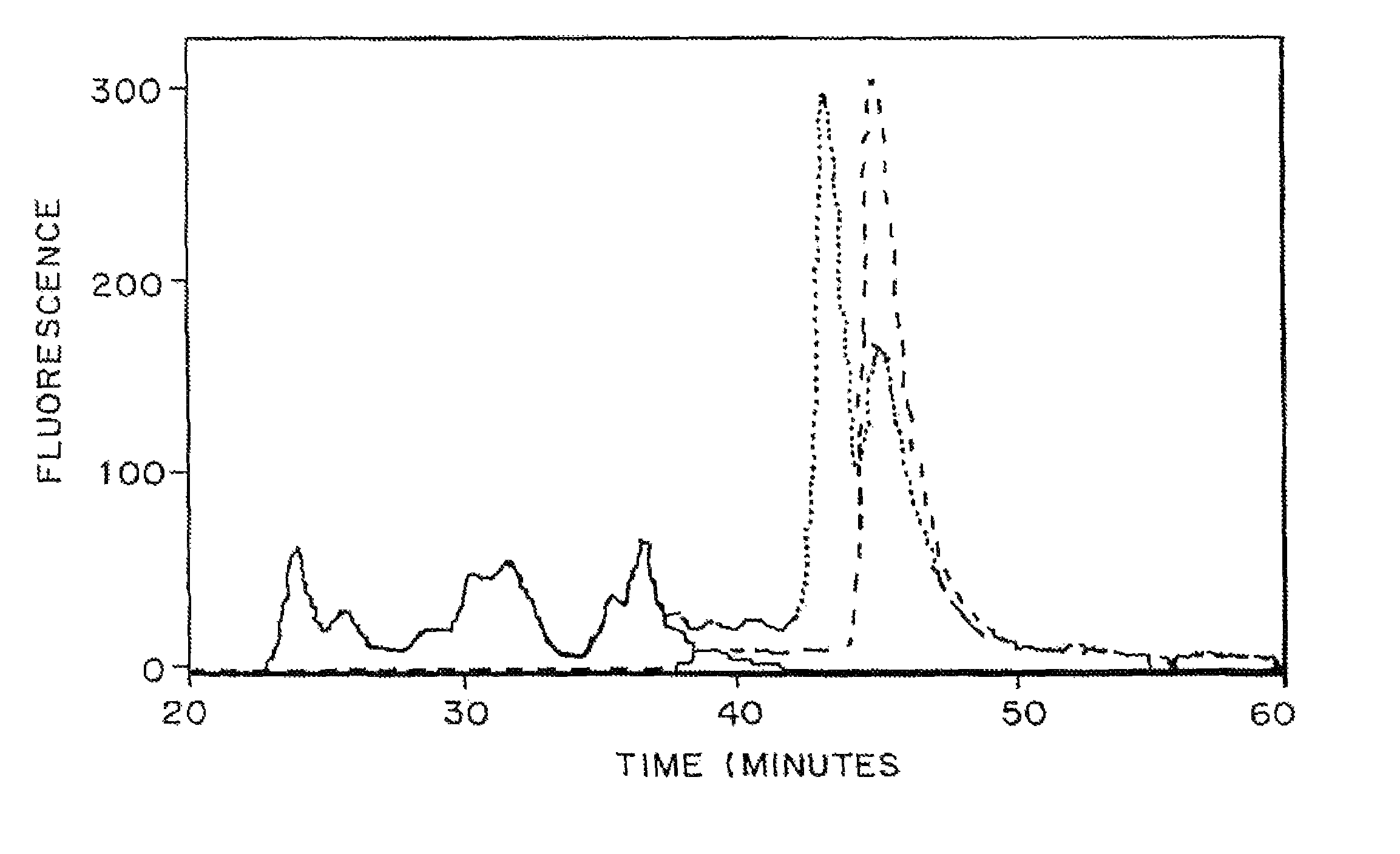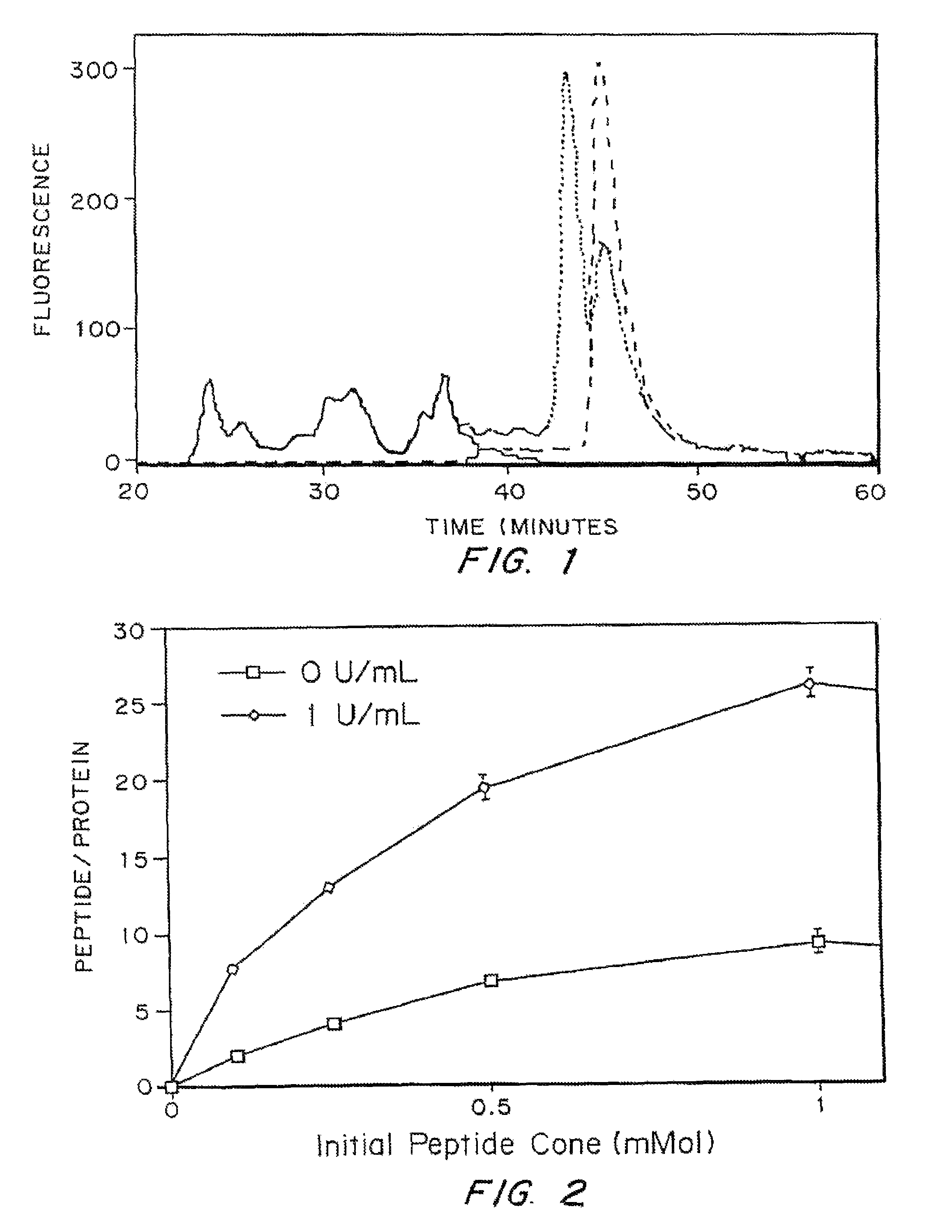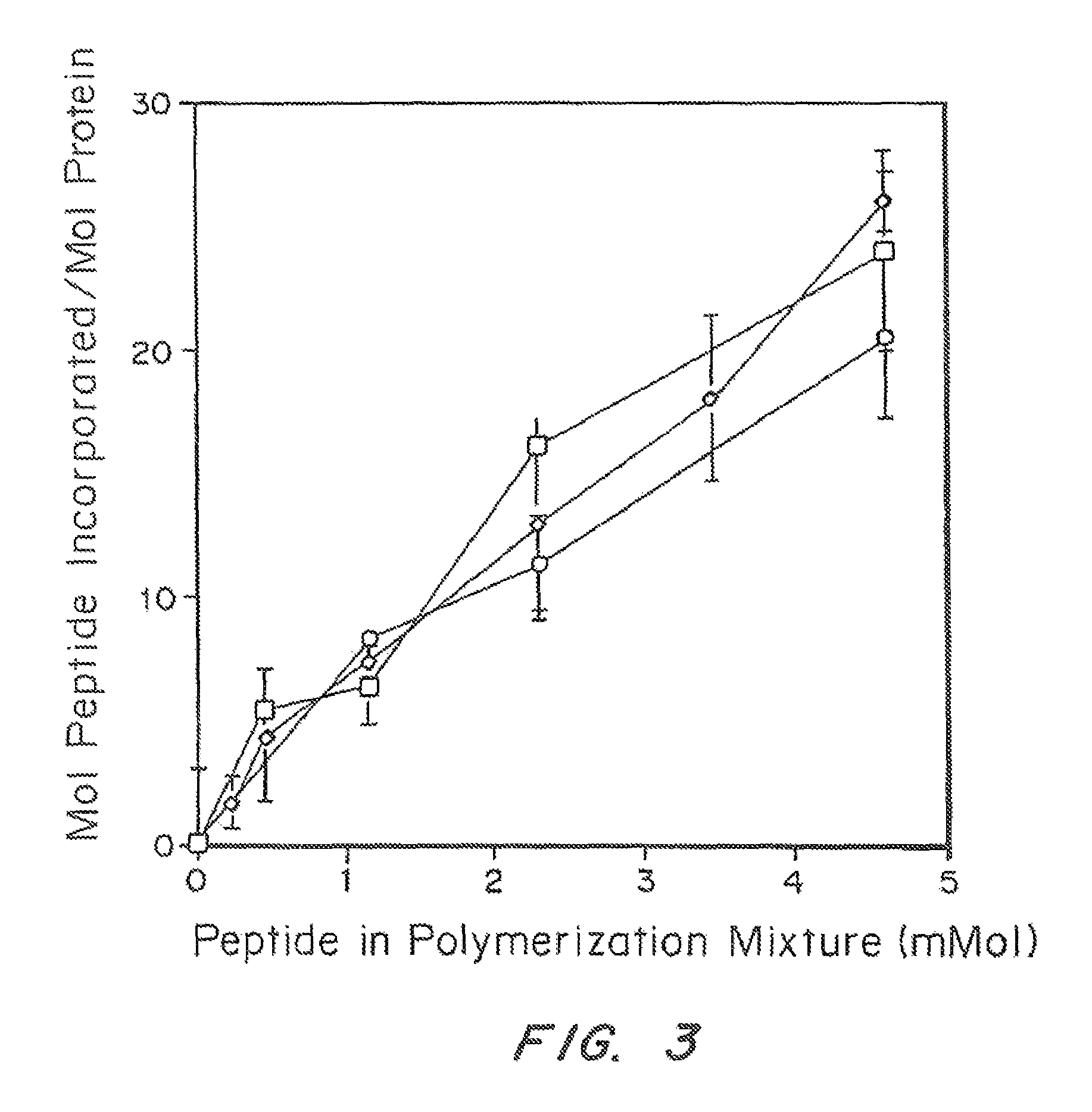PTH containing cell growth matrix
a cell growth matrix and cell technology, applied in the field of fusion proteins or peptides, can solve the problems of limited availability, complicated mechanism by which pth influences bone remodeling, and limited availability
- Summary
- Abstract
- Description
- Claims
- Application Information
AI Technical Summary
Benefits of technology
Problems solved by technology
Method used
Image
Examples
example 1
Matrices Containing Covalently Bound TGPTH
[0104]Synthesis of TGPTH
[0105]PTH 1-34-mer peptide showing similar activity to the whole protein, and proteins of this length can be synthesized by standard solid state peptide synthesis methods.
[0106]All peptides were synthesized on solid resin using an automated peptide synthesizer using standard 9-fluorenylmethyloxycarbonyl chemistry. Peptides were purified by c18 chromatography and analyzed using reverse phase chromatrography via HPLC to determine purity as well as mass spectroscopy (MALDI) to identify the molecular weight of each product. Using this method, the following peptide (herein referred to as “TGPTH”) was synthesized: NH3-Asn-Gln-Glu-Gln-Val-Ser-Pro-Leu-Ser-Val-Ser-Glu-Ile-Gln-Leu-Met-His-Asn-Leu-Gly-Lys-His-Leu-Asn-Ser-Met-Glu-Arg-Val-Glu-Trp-Leu-Arg-Lys-Lys-Leu-Gln-Asp-Val-His-Asn-Phe-COOH (SEQ ID NO: 17)
[0107]In vivo Results
[0108]The activity of TGPTH for enhancing bond regeneration was tested in a TISSUCOL® matrix in a shee...
example 2
Healing Response with Modified PTH 1-34 Attached to a Fibrin Matrix
[0110]Materials
[0111]The modified version of PTH1-34 that can be incorporated into a fibrin matrix was been tested for the healing response in the criticial size rat cranial defect.
[0112]A fibrin gel was made from TISSUCOL® Kit (Baxter A G, CH-8604 Volketswil / ZH) fibrin sealant precursor components. The fibrinogen was diluted in sterile 0.03M Tris buffered solution (TBS, pH 7.4) to form an approximately 8 mg / mL solution and the thrombin was diluted in sterile 50 mM CaCl2 solution to form a 2 U / mL solution. The final concentration of fibrinogen was 1:8 original TISSUCOL® formulation (about 100 mg / mL) and 1:160 original TISSUCOL® thrombin concentration (about 500IE / mL). A pre-determined amount of TG-pl-PTH1-34 or TGPTH1-34 was then added to the thrombin, and mixed to form a homogenous concentration.
[0113]To form the fibrin gel, the dilute precursors were mixed together by injecting the fibrinogen into the tube containi...
example 3
Preparation of Precursor Components for Synthetic Matrices
[0130]Preparation of PEG-vinylsulfones
[0131]Commercially available branched PEGs (4arm PEG, mol. wt. 14,800, 4arm PEG, mol. wt. 10,000 and 8arm PEG, mol. wt. 20,000; Shearwater Polymers, Huntsville, Ala., USA) were functionalized at the OH-termini.
[0132]PEG vinyl sulfones were produced under argon atmosphere by reacting a dichloromethane solution of the precursor polymers (previously dried over molecular sieves) with NaH and then, after hydrogen evolution, with divinylsulfone (molar ratios: OH 1:NaH 5:divinylsulfone 50). The reaction was carried out at room temperature for 3 days under argon with constant stirring. After the neutralization of the reaction solution with concentrated acetic acid, the solution was filtered through paper until clear. The derivatized polymer was isolated by precipitation in ice cold diethylether. The product was redissolved in dichloromethane and reprecipitated in diethylether (with throughly wash...
PUM
 Login to View More
Login to View More Abstract
Description
Claims
Application Information
 Login to View More
Login to View More - R&D
- Intellectual Property
- Life Sciences
- Materials
- Tech Scout
- Unparalleled Data Quality
- Higher Quality Content
- 60% Fewer Hallucinations
Browse by: Latest US Patents, China's latest patents, Technical Efficacy Thesaurus, Application Domain, Technology Topic, Popular Technical Reports.
© 2025 PatSnap. All rights reserved.Legal|Privacy policy|Modern Slavery Act Transparency Statement|Sitemap|About US| Contact US: help@patsnap.com



